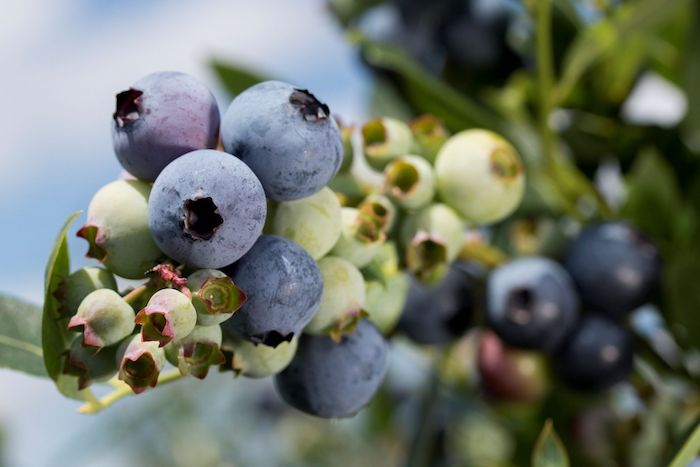UF study shows why ‘aromatic’ blueberries taste better

University of Florida scientists studying why 'aromatic' blueberries taste good have found that they contain the right genetic combination to produce the chemistry required for a pleasant blueberry flavor.
Blueberry breeders have long known that the fruit they help grow, classified as 'aromatic', comes with naturally occurring chemical components that make the fruit taste different, said Patricio Muñoz, UF/IFAS Associate Professor of Horticultural Sciences.
“These metabolites are in a category we call ‘volatile organic compounds,’ because they explode with fruit flavor when you crunch the fruit in your mouth,” he added.
Under the supervision of Muñoz, Haley Sater, Doctoral Graduate from the UF/IFAS College of Agricultural and Life Sciences, led the study which combines information from UF sensory panels with biochemical and molecular information.
Through the research, scientists identified potential candidate genes that control the production of terpenes in some types of blueberries. Terpenes are aromatic compounds found in many plants.
To reach their findings, they selected two groups of blueberry varieties: traditional blueberry varieties and 'aromatic' varieties.
Then, Charles Sims, Professor of Food Science and Human Nutrition, conducted a taste-testing panel where tasters were asked whether they could detect any special traits in the blueberries, and if so, to describe them. They also asked the tasters if they liked the fruit.
Consumers correctly detected the special aromatic blueberries, and described them using different words such as “floral,” “fruity,” “blueberry (flavor),” “strong” and more. Most tasters liked the blueberries.
“Once we analyzed the data of the panel, we saw consumers like these aromatic blueberry varieties more than the non-aromatics,” Muñoz said. “Once we had this information, we tried to understand where this characteristic originated.”
That’s when scientists put molecular marker information together with data on volatile organic compounds and discovered the aromatic varieties contained more of the terpenes, which provide aroma related to floral, sweet, citrus and fresh.
“Now we know why these blueberry varieties make the fruit aromatic,” Muñoz said. “We now have the capacity to use these compounds to formally classify varieties as aromatics. We can predict consumer liking and preference for these varieties.”






































